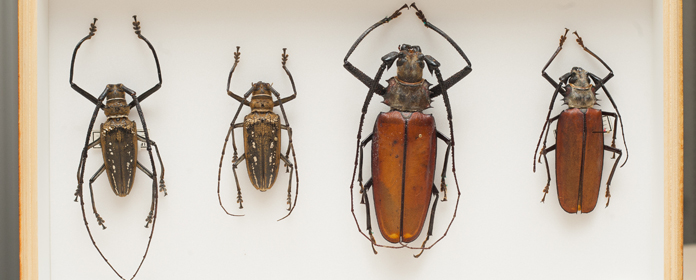The University's Museum of Natural Sciences opens its storage room to the public for the first time on International Museum Day.
Visits will be made in groups of 10 people to learn about the collections where more than 2.5 million specimens of plants, animals and fossils are preserved.

On Thursday, May 18, on the occasion of International Museum Day, the Museum of Natural Sciences of the University of Navarra will show for the first time its deposits, where more than two and a half million specimens of animals, minerals and plants are preserved.
On Thursday there will be three free guided tours, open to the public, starting at Sciences Building (Hexagon Building) at 10:30 am, 12:00 pm and 5:00 pm. During the tour, visitors will see the pieces displayed in 70 showcases spread over the five floors of Hexagon Building, as well as the deposits, which visit will be done in groups of 10 people. In total, the tour of the Museum of Natural Sciences will last approximately one hour.
The repository stores specimens from the PAMP Herbarium and the Zoology Museum -such as the tropical butterfly collection of Gómez Bustillo, a world authority on the subject, with specimens from the Far East, Africa and South America-, or the mollusk collection of the architect José del Río, consisting of 4,000 different species of limpets, tongues, Venus combs, solaria or harps, and 180 of cones, one of the most complete collections of mollusks in Spain in its category.
Museums that educate, research and teachSince research is the main activity and source of the Museum's material, visitors will be able to see all the groups of animals that department works with at Environmental Biology: vertebrates (fish, amphibians, reptiles, birds and mammals) and invertebrates (the most numerous), organized by taxonomy. The latter, explains Professor David Galicia, "is vital for finding any of the millions of records that we currently house, in case they are required for loan to other museums or for our own research".
Among other aspects, it will also explain how natural science museums work and what maintenance protocols they require. goal "The environmental conditions of the repository and the security systems must ensure that the material remains in the same state in which it was donated to us, with the aim of losing as little information as possible for future research," explains David Galicia.
Finally, according to researcher of the Museum of Natural Sciences of the University of Navarra, the ephemeris of International Museum Day should serve "to emphasize the role played by science or natural history museums in the conservation of information and the promotion of knowledge about nature, the need to conserve and protect it".




